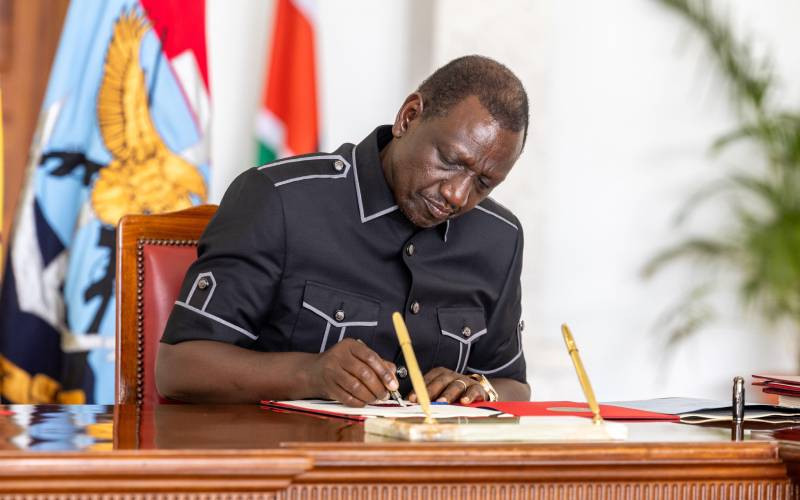By Silvester Kasuku
Last week, I introduced a discussion about the wage bill by trying to show that it was the consequence not just of a large public service, but also of a structural imbalance in Kenya’s economic development. Last week’s discussion reviewed economic policy since independence.
This week, I take up where I left off, and conclude by suggesting that the true answer to our difficulties is an expansion of economic space.
Claude Ake, the Nigerian political scientist, notes that African economies have two key problems. First, enclave development: the concentration of development activities in a few urban areas. Kenya is no exception: Nairobi, Mombasa, Nakuru, Kisumu, Eldoret, and Naivasha account for much of our production. He also observes that production is both limited in area, and in those areas, serious economic activity is limited to a small range of activities.
This is also true of Kenya: most of our economic action is centered on agriculture and a very limited range of secondary industries. Kenya’s economy is inadequately diversified. We rely on a few primary commodities — coffee, tea, pyrethrum, flowers and tourism — for foreign exchange. Consequently, our economy lacks the desired dynamism.
The basic antidote to these legacies of past economic policy is to expand the space for our production.
That antidote is also the long-term cure for the government’s massive recurrent expenditure, instigated by rising demand for provision of core services such as security, education, health, disaster management and a sagging wage bill standing at approximately 12 per cent of Gross Domestic Product and estimated to reach 50 per cent of our annual budget by 2015.
This wage bill was exacerbated by the cost of setting up county governments, and the growing demand for resources comes in the wake of marginal growth in government revenue, leaving few resources for investment in infrastructure development and other critical sectors of the economy.
The government proposed austerity measures; salary cuts and freezes among them. These are timely, well intended and have precedent. The economies of China, Brazil, Malaysia, Singapore and India had a period of low wages that attracted industrial investments prior to take off.
Still, the problem remains; in essence, the country currently depends on revenue generated from 30 per cent of the country’s land space for services to 100 per cent.
This must change. The remaining 70 per cent of the country have the resources for contributing to the economy. Northern Kenya is endowed with high value resources — minerals, oil and gas — that can generate high value returns to the economy
The potential of projects centered in northern Kenya for turning round the Kenyan economic performance and providing relief to the overstretched rest of the country is enormous. In addition to the oil and minerals already proven, there is huge potential for undertaking massive and mechanised agricultural production in non-traditional parts of Kenya.
The projects mainly, but not limited to LAPSSET, cover more than 12 counties. When complete, they will expand the revenue base and transform the Kenyan economy. For instance, the construction of the Lamu port is expected to open trade opportunities in special economic zones and transport and logistics business. At the same time, the planned infrastructure development will reduce over-reliance on the Northern Corridor, by creating a second transport and economic corridor, which will facilitate trade and investment with South Sudan and Ethiopia.
However much the government invests in the 30 per cent of the country, our growth will stutter until investments are made to open up the 70 per cent of Kenya’s land space located on the northern zones. The need to shift to new growth frontiers is clear. If the public wage bill worries you, you should look to expand production.
Stay informed. Subscribe to our newsletter
 The Standard Group Plc is a
multi-media organization with investments in media platforms spanning newspaper
print operations, television, radio broadcasting, digital and online services. The
Standard Group is recognized as a leading multi-media house in Kenya with a key
influence in matters of national and international interest.
The Standard Group Plc is a
multi-media organization with investments in media platforms spanning newspaper
print operations, television, radio broadcasting, digital and online services. The
Standard Group is recognized as a leading multi-media house in Kenya with a key
influence in matters of national and international interest.
 The Standard Group Plc is a
multi-media organization with investments in media platforms spanning newspaper
print operations, television, radio broadcasting, digital and online services. The
Standard Group is recognized as a leading multi-media house in Kenya with a key
influence in matters of national and international interest.
The Standard Group Plc is a
multi-media organization with investments in media platforms spanning newspaper
print operations, television, radio broadcasting, digital and online services. The
Standard Group is recognized as a leading multi-media house in Kenya with a key
influence in matters of national and international interest.







